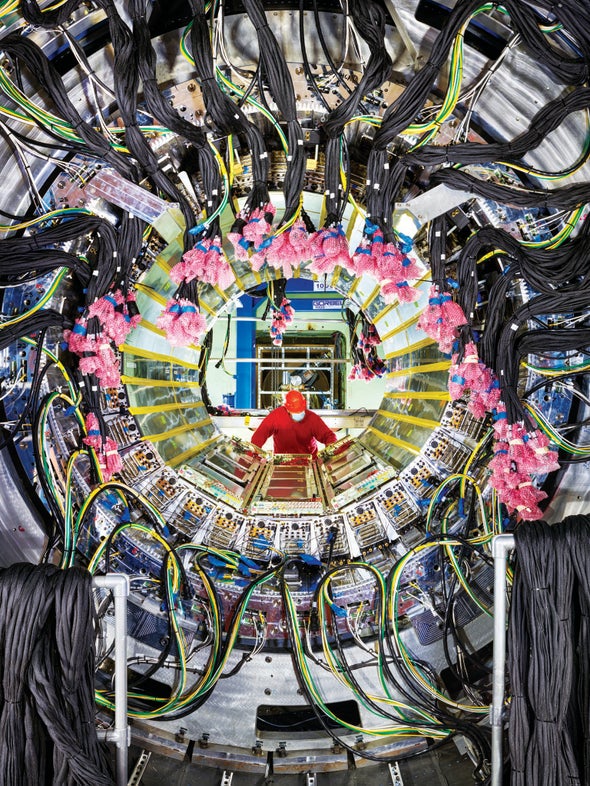 New experiments can re-create the young cosmos, when it was a mash of fundamental particles, more precisely than ever before
New experiments can re-create the young cosmos, when it was a mash of fundamental particles, more precisely than ever before
Por: Scientific American. Acesse aqui a matéria original.
---
Imagine you have a microscope that would let you see a single atom up close. Let's say it's a hydrogen atom, the smallest kind. Zoom in past the single electron orbiting at the outskirts, and you'll find the nucleus—in this case a lone proton. High school physics would have you believe that inside this proton you'll find a simple triad of three fundamental particles called quarks—two up quarks and one down quark. But the reality inside a proton is so much more complex that physicists are still trying to figure out its inner structure and how its constituents combine to produce its mass, spin and other properties.
The three quarks in the basic picture of the interior of a proton are merely the “valence quarks”—buoys bobbing on top of a roiling sea of quarks and antiquarks (their antimatter counterparts), as well as the sticky “gluon” particles that hold them together. The total number of quarks and gluons inside a proton is always changing. Saiba mais...

